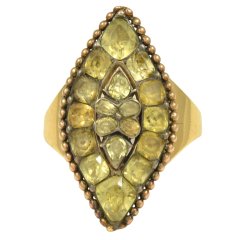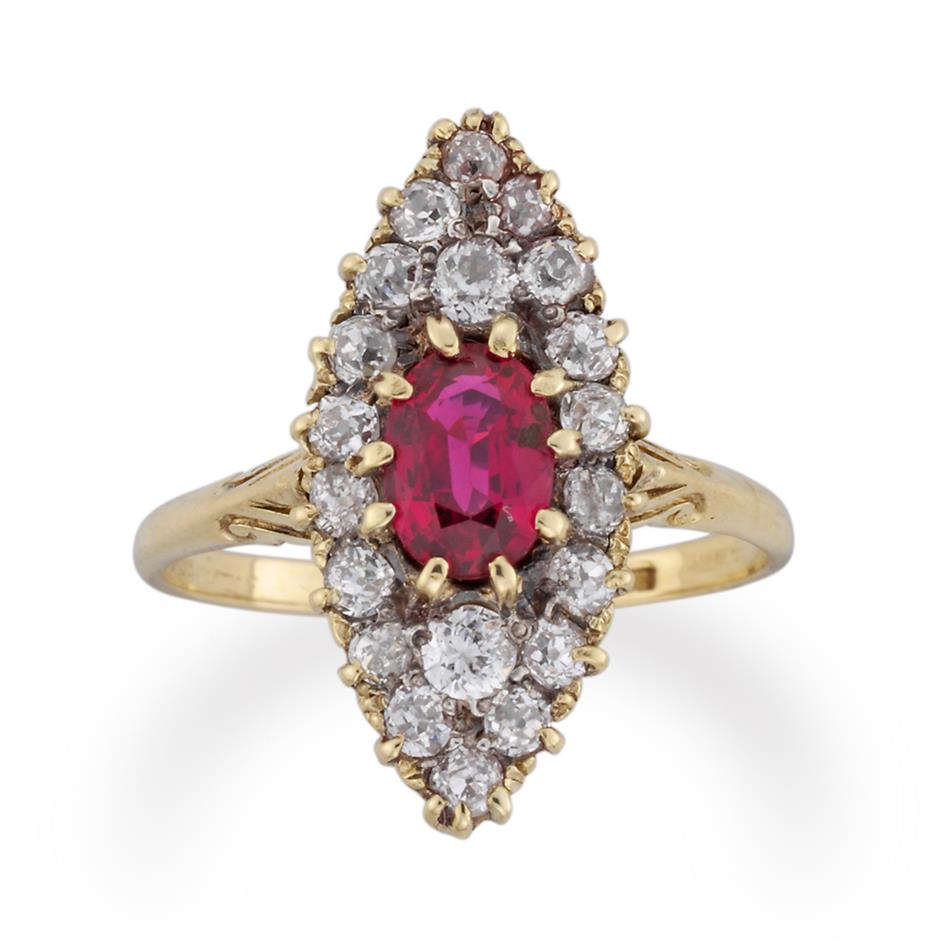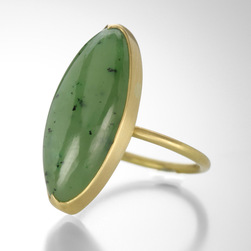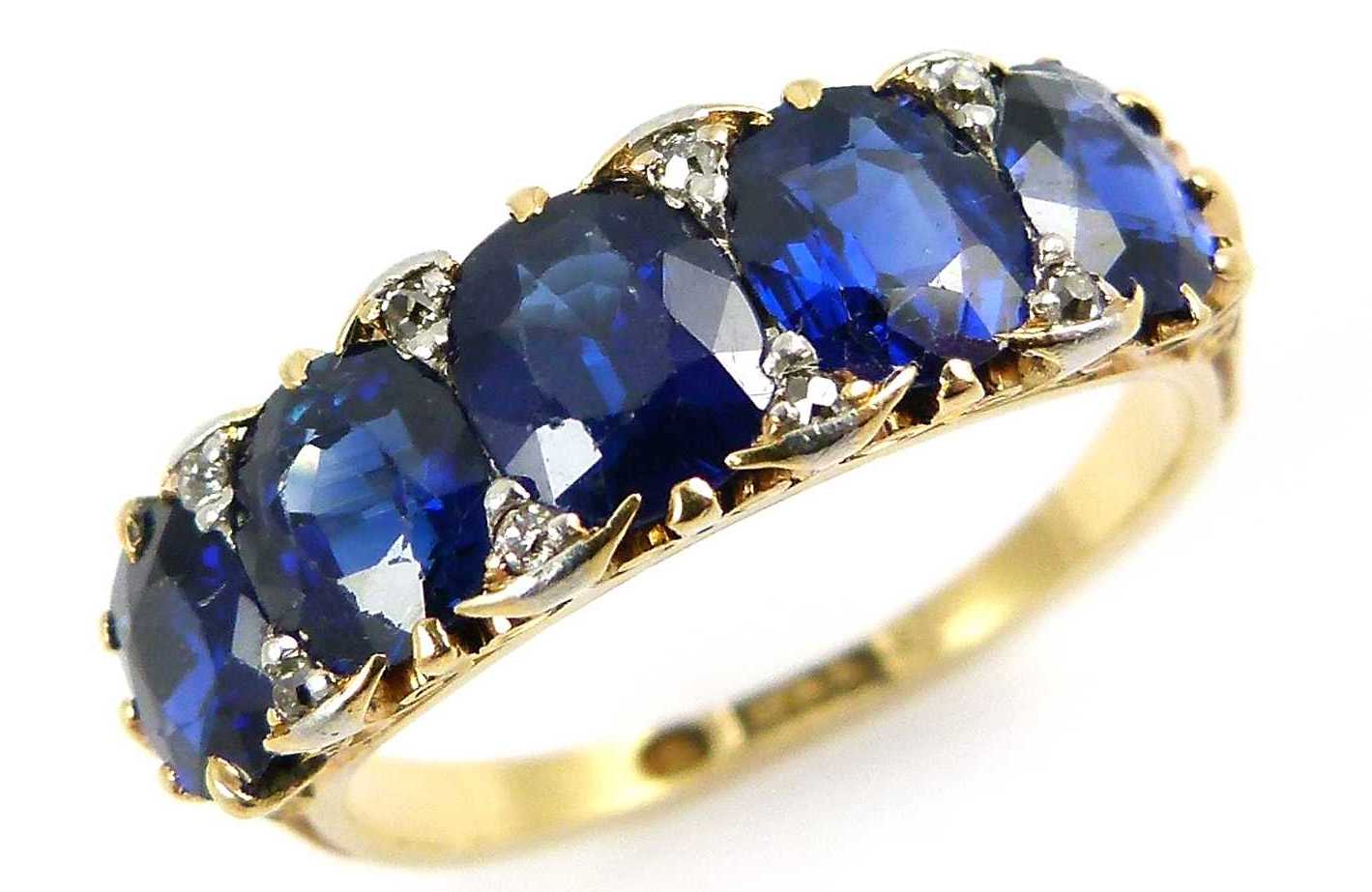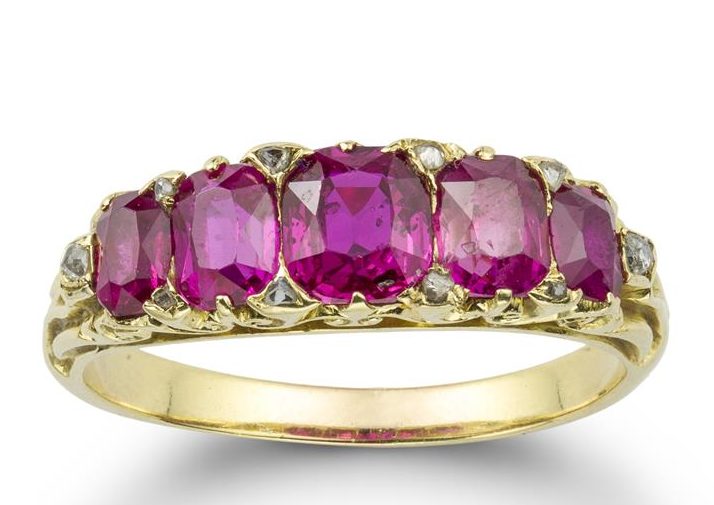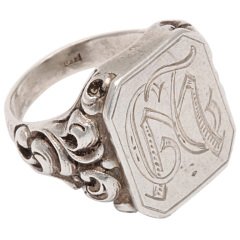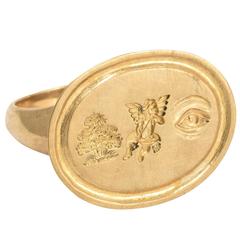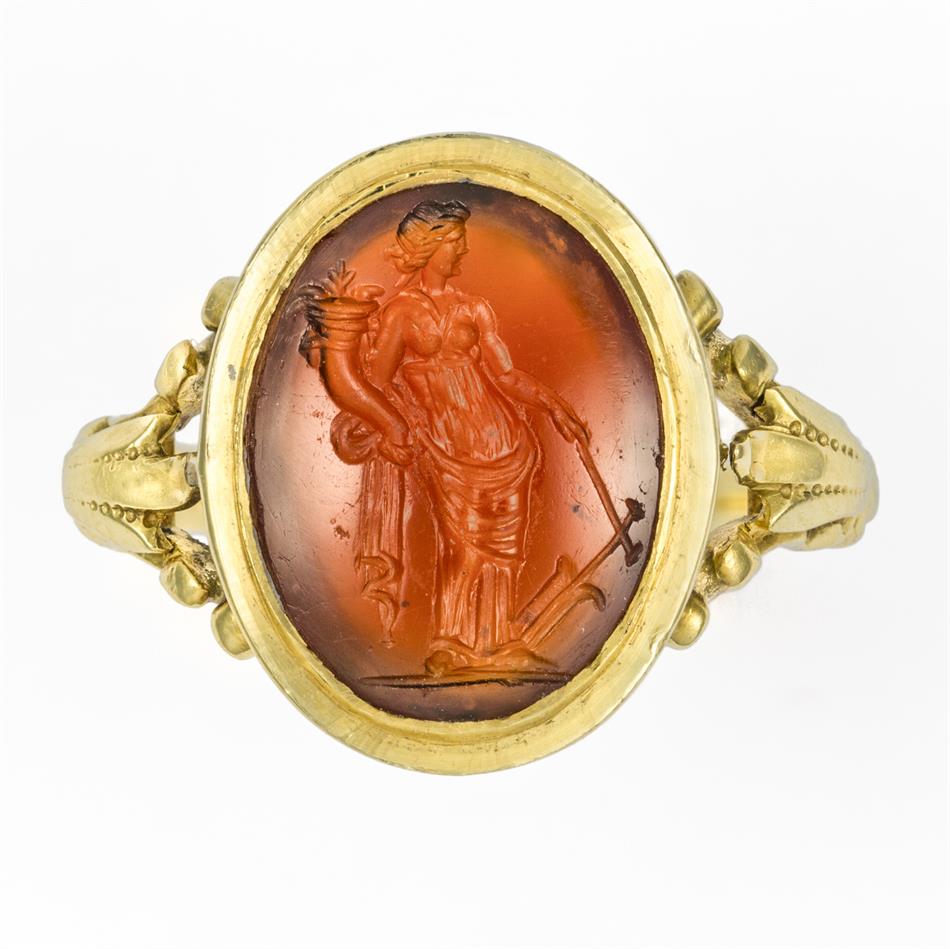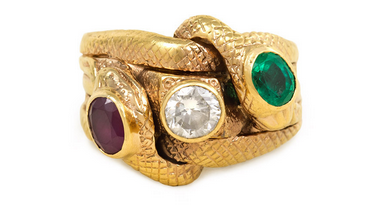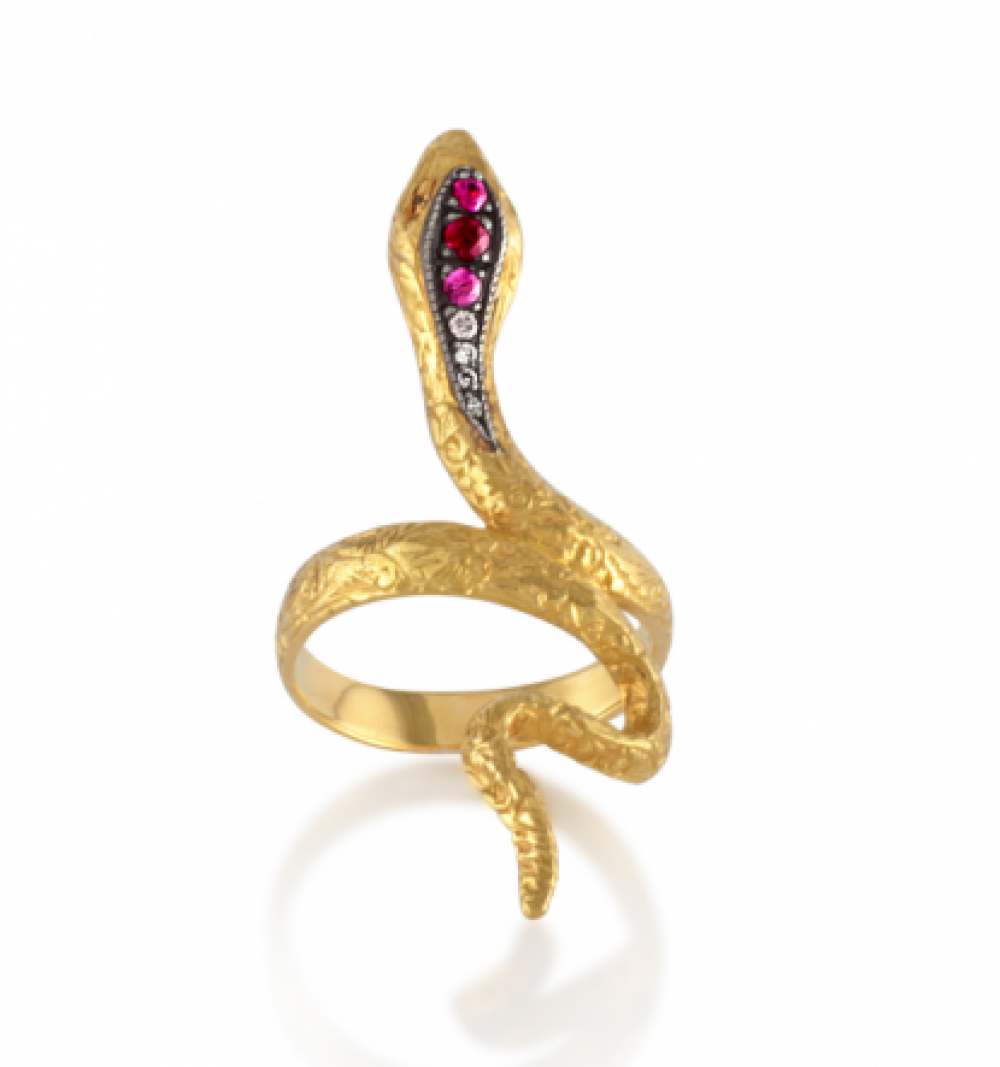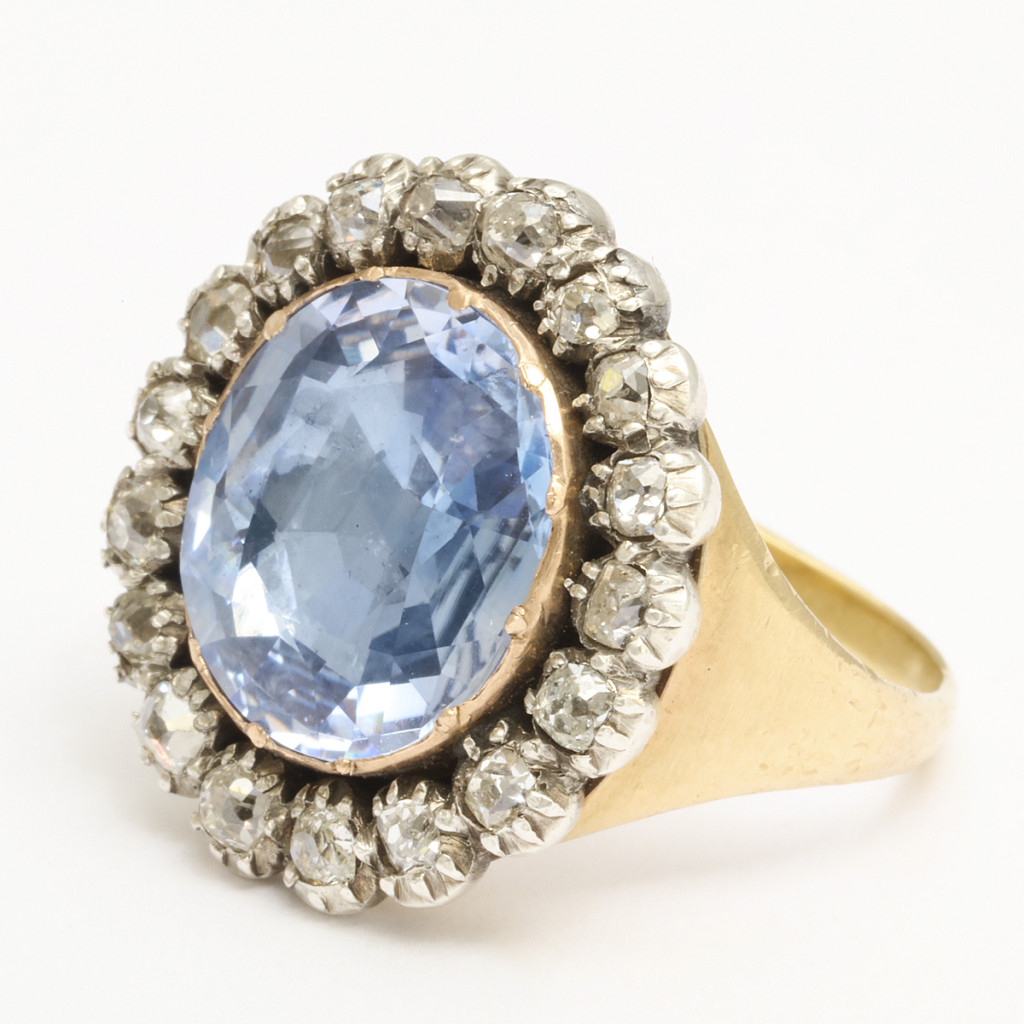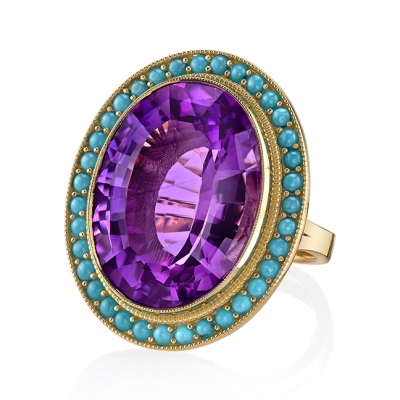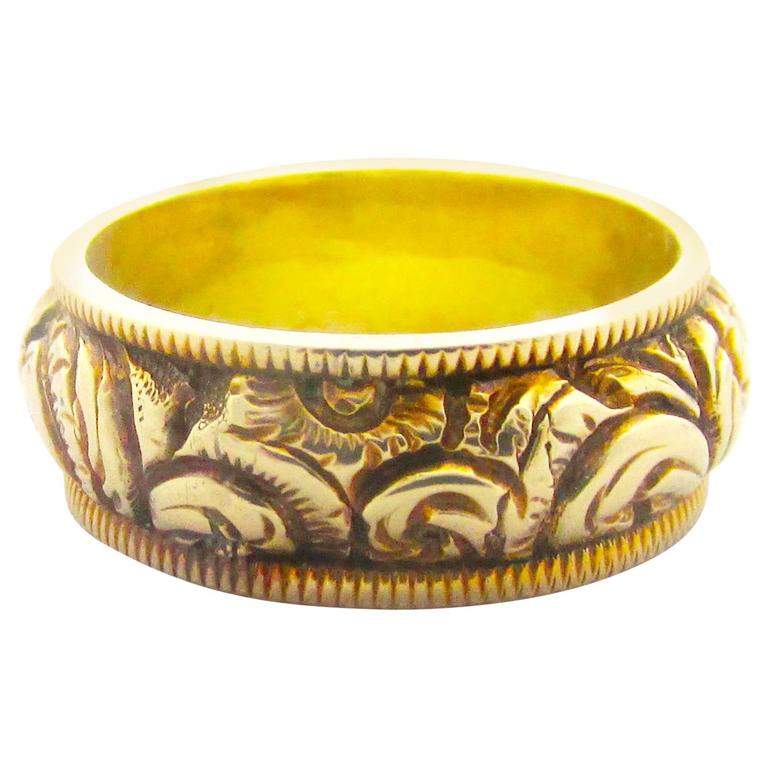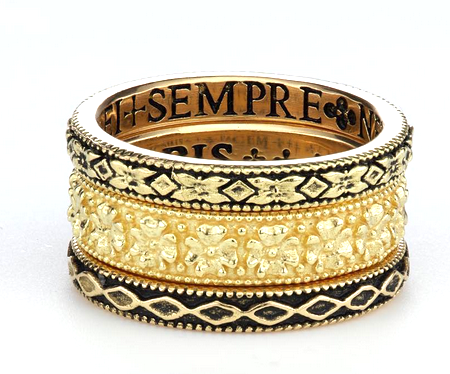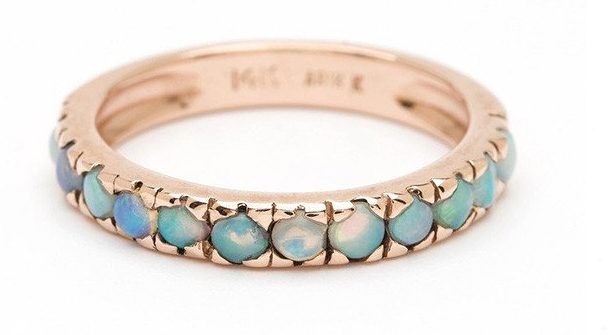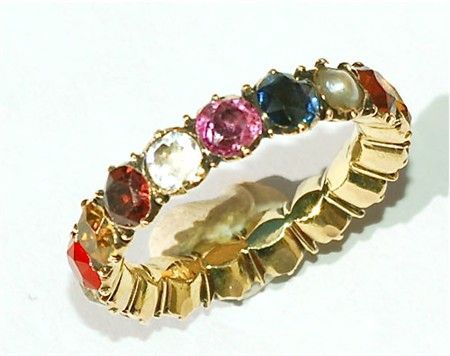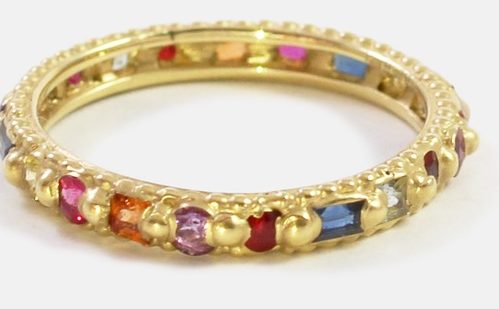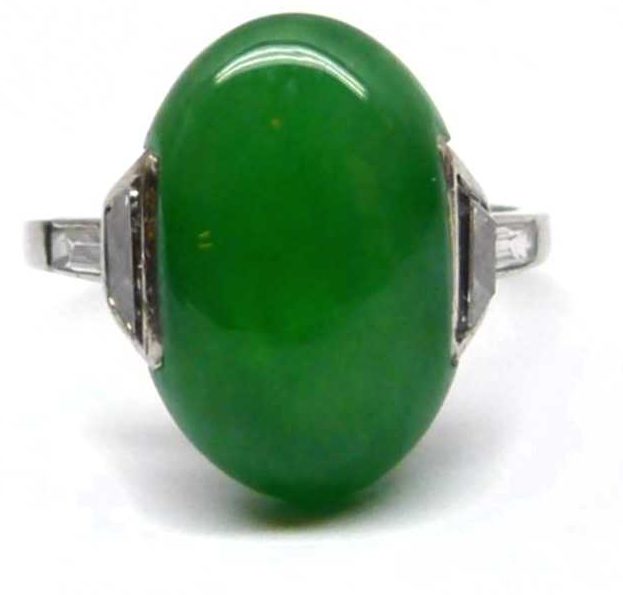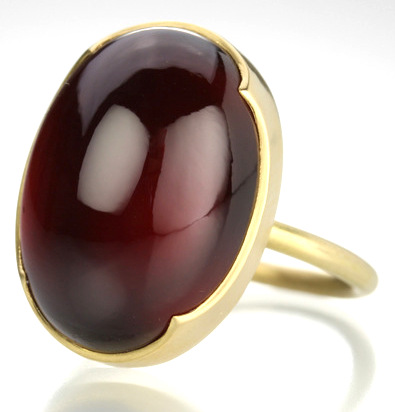Eight Styles of Rings you will want to own
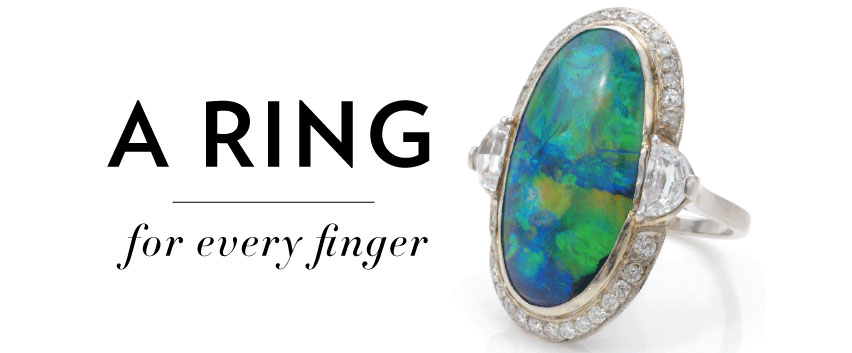
In March, we talked about the trends we saw on the fall/winter ready-to-wear runways and the directions, which are already popular in the jewelry design studios. We also offered our advice on five essentials jewels, which you should own for spring/summer. As we head into April, we will be featuring a series on classic, must-have silhouettes in all categories of jewelry. These are styles that have endured from the 18th through 21st centuries for those of you building an antique collection or adding to your modern jewelry wardrobe.
We kick off our first installment with eight ring silhouettes and how they have taken shape during different time periods in history:
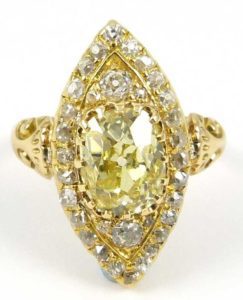
S.J. Phillips yellow diamond and mine cut diamond 19th century Navette
Navette style rings, which are composed of a long marquise shape and can rest just under the knuckle or almost cover the entire finger are making a comeback due to interest in all types and styles among the new generations of antique ring collectors. Sheri Evans co-owner of Metier San Francisco says “There’s a certain grace and sexiness to the navette form as it elongates the finger. It packs a lot of look into its slim, lovely shape.” She continues, “Generally longer and bigger than other ring shapes there’s space for elaborate stone work or beautiful miniature paintings, yet the navette never looks heavy on the hand.” This silhouette was first popularized in the Georgian era in painted ivory memorial scenes and rose and mine cut diamonds as well as stones with a soft hue such as chrysoberyl. In the Victorian era, mine cut diamonds often surrounding a center cushion cut ruby or emerald. Over time, they have been pared down in ultra modern single gemstones in streamlined settings. These rings are dynamic statement styles, yet should be comfortable to wear.
- The Spare Room Antiques’ Crysoberyl Georgian Navette
- Bentley & Skinner’s Victorian Diamond and Ruby Navelte
- Gabriella Kiss’ single stone streamlined bezel set Nanette
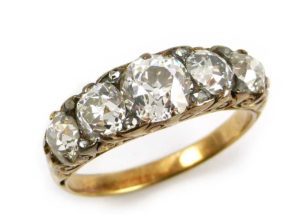
The Spare Room Georgian 5 stone ring
Five stone rings are versatile and perfect for women who prefer rings that go east to west across the finger. Earlier, 18th century versions of this style are closed and foil backed and in silver topped gold and cut down collet settings. They have a lower profile than later styles and are predominantly rendered in old mine or rose cut diamonds and gemstones such as chrysoberyl, pink topaz, flat cut garnet and amethyst. Entering into Victorian and then Edwardian times, stones were cut with more precision and jewelers opened the backs of these rings to allow for the light to add more sparkle. Those created in the late 19th and early 20th century were set with old mine-cut diamonds or colored gems with diamond accents—predominantly rubies, emeralds and sapphires—in high karat yellow gold.
- S.J. Phillips Sapphire 5 stone ring, circa 1910
- Bentley & Skinner Victorian ruby 5 stone ring

Circa 1700 Modern signet inspired by antque design ‘protector of my heart’ signet ring with engraved shank
Signet rings have made one of the biggest comebacks. Celebrities are wearing them, designers are re-interpreting them and antique shops and dealers are selling out of them. In an age of personalization, these rings literally offer the wearer an individualized stamp of style—one that can be as simple as monogrammed initials or more intricate, depicting mottos, messages and motifs that reflect beliefs and superstitions. Signets and seal rings date back 4,000 years and took on many forms and were crafted from a variety of materials. “Signus” means sign in Latin, and the rings were, in fact, used as a form of signature—the image of the ring in relief, when impressed on wax, sealed deals, identified ownership and authenticated documents. The images were engraved into bronze, silver, gold, crystal or hard stone intaglios such as carnelian, bloodstone, agate and sardonyx, which were then set into gold shanks. They represented classical and mythological subjects and evolved into symbols of power and affiliation. Eventually they also depicted occupations from merchants to poets. Married couples’ initials were engraved and linked together in a delicate design, sometimes accented by meaningful leaves and floral motifs. A true statement piece, they can be worn on various fingers to leave a lasting impression and your mark of distinction.
- Glorious Antique Jewelry’s English Victorian Silver engraved shank monogrammed signet ring
- Butterlane Antiques puzzle rebus signet ring
- Bentley & Skinner’s Carnelian Fortuna intaglio
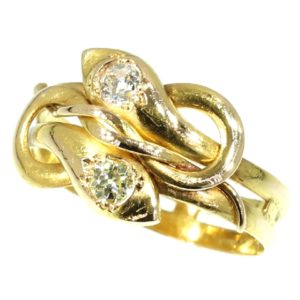
Antique Victorian double headed snake serpent ring with old mine cut diamonds
Snake Rings had been around for centuries and in different cultures and civilizations symbolized different meanings. But when Queen Victoria became engaged to Prince Albert and he gave her a continuous snake ring with an emerald, her birthstone, centered in its head. The serpent soon became the most romantic motif that would continue to signify everlasting love and would set a trend throughout England, and eventually throughout Europe and the United States. The snake continued throughout the naturalistic Art Nouveau movement, accented by enamel and vivid colored stones such dematoid garnets but went out of favor briefly during the Art Deco movement. In the mid 20th century, renowned jewelers such as Bulgari and David Webb brought the serpent motif back in chunkier bolder versions. Modern designers continue to interpret snake rings in their current collections in all styles and karats of gold.
- Kentshire Gallery’s gemstone snake ring,, circa 1890
- Arman’s modern version of a serpent ring with diamonds and spinel in high Karat gold
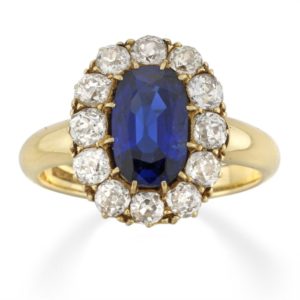
Bentley & Skinner antique Ceylon sapphire and mine cut diamond cluster ring
Cluster Rings traditionally were designed with a simple shank to allow the center of the ring become the focal point. Earlier cluster rings often took on a more organic or version of a cluster, which then evolved into a more stylistic floral design or a streamlined look of center stone with diamond halo. They date back before Georgian times. Victorian styles feature either all mine-cut diamonds or a mine-cut centers with a rose-cut surround, or vice versa, as well as the big gemstones: ruby, sapphire and emerald. This style continued into Edwardian and the Art Deco periods and eventually throughout the later part of mid-century. They became more refined as stone cutting and platinum came into the fore. If you prefer an even more unique ring, you can try a Persian turquoise center stone, which pops against the softness of the mine-cut diamonds and the richness of the yellow gold. Cabochons and other opaque gems work well for current styles with colored stone instead of diamond surrounds that offers just the right amount of vibrancy and contrast.
- A La Vieille Russie antique sapphire and diamond closer ring
- Anabel Higgins Center moder ametyst and turquoise surround cluster ring
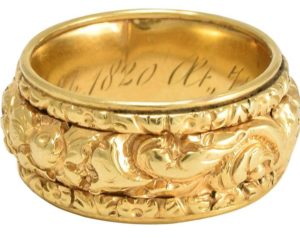
Butterlane Antiques chased antique band
Engraved gold bands often depict different flowers and/or motifs that speak the language of love. Georgian styles are deeply chased with sentimental designs and were often inscribed with the date and names of a married couple when given as wedding bands. In the Victorian through the Edwardian Era—these bands were rendered in ultra wide as well as delicate narrow proportions. Due to the industrial revolution and mass production many were stamped out or were created by companies in multiples. They were still sentimental and featured a language of love, but they were not as individualized as those from the Georgian era. Retro styles also featured more common motifs, however there are always a few that stand out as limited editions or one-of-a-kinds. Whether chased, engraved or stamped—they stack well with eternity bands and low profile five stone rings.
- The Spare Room Antiques Chased Georgian Ring
- Erica Molinari engraved bands with and with enamel and sayings inscribed
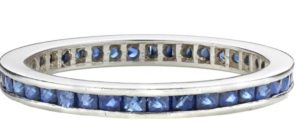
Past Era Art Deco French Cut Sapphire eternity band
Eternity bands were named for the continuous circle of the ring representing everlasting love. The all around gemstones were also part of the message of eternity styles—the pattern goes unbroken and the stones chosen to represent different meanings. The most popular of gems include diamonds for endurance, rubies for passion, sapphires for fidelity and emeralds for prosperity. They are prefect for stacking together and with all of the rings mentioned in this article. In the Georgian era, they were shown in closed foil back settings in tiny flat cut or cabochon stones. Edwardian into Art Deco styles were designed in platinum and featured princess cuts, baguettes, or a combination of shapes and settings creating a geometric effect. One of the most popular styles was square cut colored gemstones with round full cut diamonds. They were shown throughout the 20th century and are still being featured today in a range of different settings and gemstones. The thinner and more stackable the better.
- Arik Kastan opal modern eternity band
- Rowan and Rowan antique Planetary eternity band each stone representing the planets
- Polly Wales mosane Harelquin series eternity band
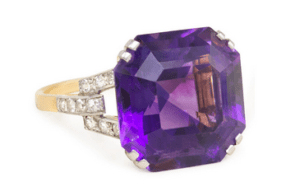
Kentshire Gallery’s Amethyst cocktail ring, circa 1945
Cocktail rings first became popular in the Jazz age. Women’s new found freedom allowed for jewels that were less fussy then the swirls and garlands of the Edwardian/Belle Époque period. Hemlines were on the rise as were skyscrapers, which influenced a more streamlined approach to jewelry. Single gemstones in emerald and cushion cuts with side diamonds or tonal colored gemstones became the rage. During the late ‘30s and early ‘40s, when woman gave up their platinum for the war effort, large semi-precious stones such as citrine, amethyst and aquamarine were set into in 14K yellow or rose gold. These styles were in vogue throughout the retro period. During the ‘50s and early ‘60s, the cocktail ring represented the more laid back cultural influences—couples in their new suburban houses attending après work parties: men shaking martinis and women holding their ‘cocktails’, sporting these bigger and bolder and colorful rings. This style is now a classic, a heirloom which has been handed down or a brand new statement piece, which looks fabulous on it’s own or with a pair of long earrings for a sense of dramatic glamour.
- S.J. Phillips jadeite cocktail ring from the 1930s i
- Gabriella Kiss’ Modern Garnet Cabochon Cocktail Ring

